
Courtesy of Black Cube Nomadic Art Museum

Audio By Carbonatix
When we first tapped Cortney Lane Stell as a Colorado Creative in 2013, she was honing her vision and her curatorial chops, building in-the-moment contemporary-art shows at the Rocky Mountain College of Art + Design’s Philip J. Steele Gallery. In the present, as director and curator of the Black Cube Nomadic Art Museum since 2015, she’s created her own analog World Wide Web for art, unbound by brick and mortar, with Denver at the center of its sensitive connectivity. Her work with artists, including local, national and international names and destinations, now engages audiences freely, in a critical exchange of ideas with no limits.
Next on her list? Believe it or not, setting down roots, as she discusses below. Come along and see the future as Stell re-examines the Colorado Creatives questionnaire.
Black Cube pop up exhibition + launch: Desiree Holman 'Sophont in Action' at Red Rocks, CO from Black Cube on Vimeo.
Westword: How has your creative life grown or suffered since you last answered the CC questionnaire?
Cortney Lane Stell: A lot has changed for me since 2013. I left my long-term post as the gallery director at the Rocky Mountain College of Art + Design to work with Laura Merage on creating Black Cube (a nomadic contemporary art museum headquartered in Denver). This change has been a large transition; moving from academia to the nonprofit world has meant learning how to direct an organization and produce site-relational artwork as opposed to curating within the white cube. I feel truly blessed to have had both opportunities.
Beyond that, I’ve also built stronger relationships with Prague and Mexico City, which has been deeply rewarding. I’ve formed relationships with artists and curators that will last a lifetime. And last but not least, it’s now ten years that I’ve been in a relationship with Dmitri Obergfell. He continually inspires and challenges me, and I am beyond lucky to share a life with him.
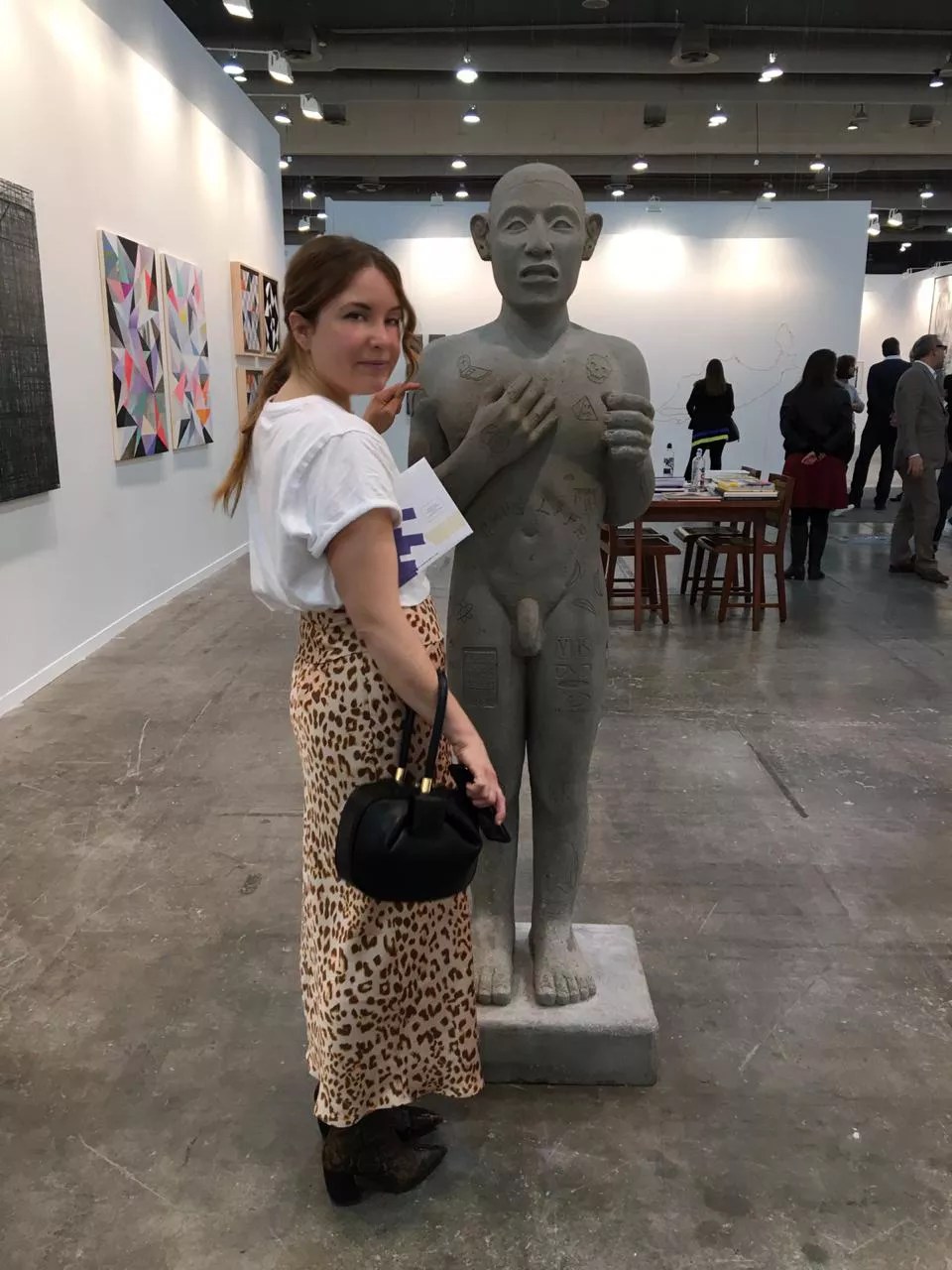
Stell at the Zona Maco art fair in Mexico City.
Courtesy of Black Cube Nomadic Art Museum
As a curator of exhibitions/installations both local and international in scope, how do you think Denver’s art scene compares on a global level?
That’s a loaded question! I should begin by saying that I work in the contemporary art field, so I will respond from that perspective. Denver has a small commercial art scene compared to larger art cities in the U.S. (i.e., NYC, Los Angeles, Chicago). I think this has several effects. First, the community is not market-driven as far as “big” art sales go. Because of this, I think the community is less competitive and more collaborative. I also think artists expect to sell lower-priced artworks.
Secondly, Denver has a very top-heavy nonprofit scene – meaning we have large, healthy museums. This is in part due to the SCFD tax that consistently supports three “tiers” of organizations. The positive side to this funding is that it stabilizes a specific sector of the art scene in a community without a ton of art philanthropy (compared again to major art cities such as NYC). The downside to this is that our large nonprofit art scene (mostly museums) is very commercial-focused – think big, traveling blockbuster exhibitions.
Another aspect of our art scene relates to the changes we are seeing in audiences, both locally and nationally. The influence of smartphones has pushed a lot of art experiences toward entertainment – think Crush or Meow Wolf. I think the general public, in many instances, is trained to see art as selfie-chambers (i.e., decoration, design or entertainment). We also seem to be pressured to view art as escapism – something I am very suspect of.
I think the most impactful contemporary art helps us to digest and reflect on our world. Essentially, I believe art should relate to the world like a mirror. I worry that in a time of political divide, ecological challenges and a changing digital economy, we need to be present now more than ever, as things are evolving quickly, and we need to be able to reflect critically.
Lastly: our artists. I think our artists hold up to the international scene. We have a deluge of talented people with strong visions. I hope that we can continue to provide opportunities to these artists and share them with the wider world.
What’s missing here?
We are missing opportunities for more critical conversations in a myriad of forms, from public to private and from formal to casual.
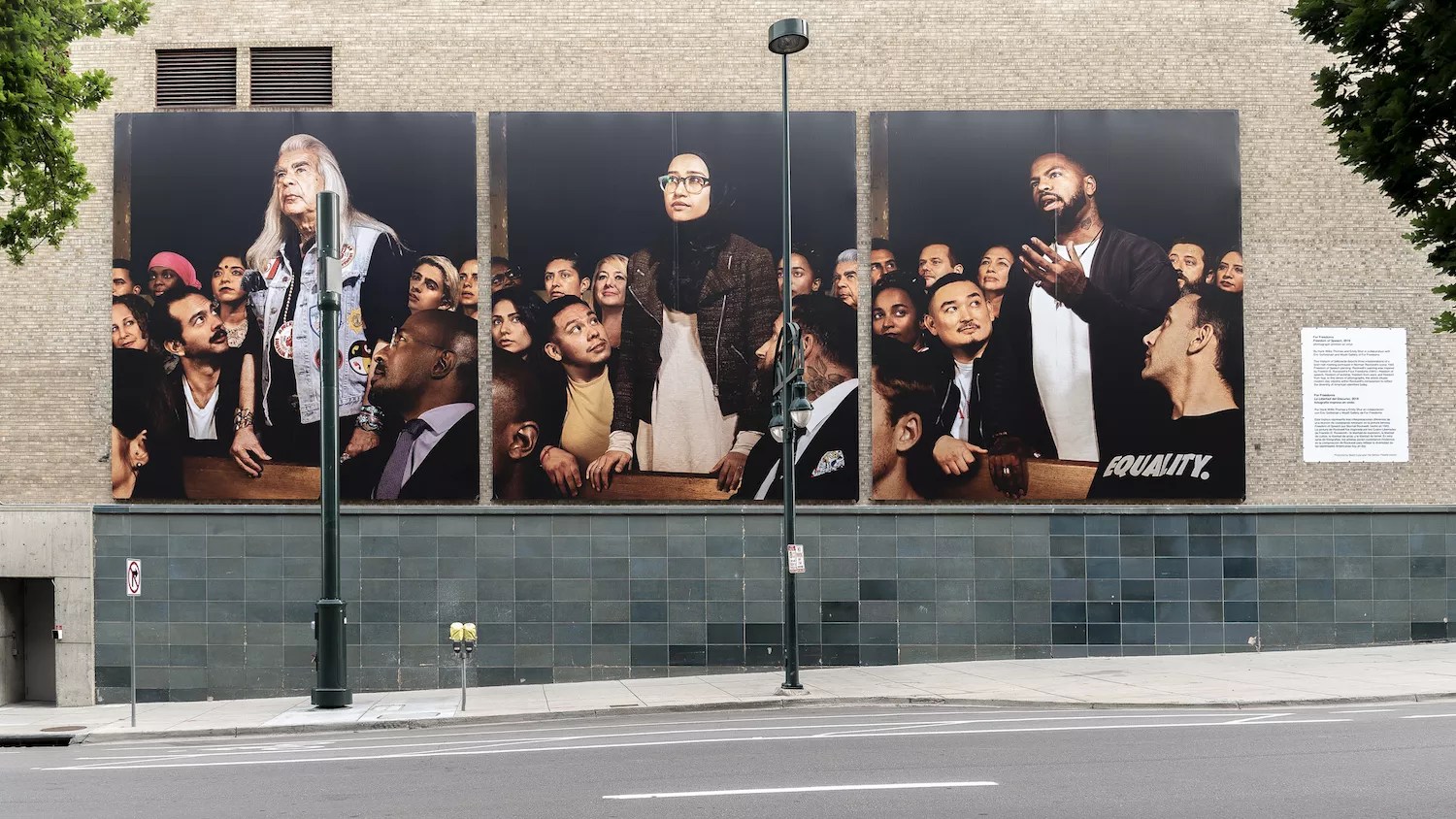
The For Freedoms triptych, a piece of MONUMENTAL in the Denver Theatre District.
Courtesy of Black Cube Nomadic Art Museum
What are the overarching ideas behind the MONUMENTAL project, and why are they important to address?
MONUMENTAL is a series of public, contemporary artworks and community-engagement programs that explore, question and transform the role monuments play within society. There are five public artworks and two programs that occur between July 12, 2019, and January 31, 2020. The aim of the project is to reimagine how public art can impact residents of all backgrounds, foster civic engagement and build more resilient communities.
The project is Black Cube’s second partnership with the amazing Denver Theatre District. I selected three local artists, a collective of four national artists and one international artist to provide perspectives on the subject matter. The temporary works illustrate various interpretations on the relationship between monuments and our community, national identity and changing world. It’s a big project, and it unrolls over time. If folks are interested, I recommend they check out Black Cube’s website.
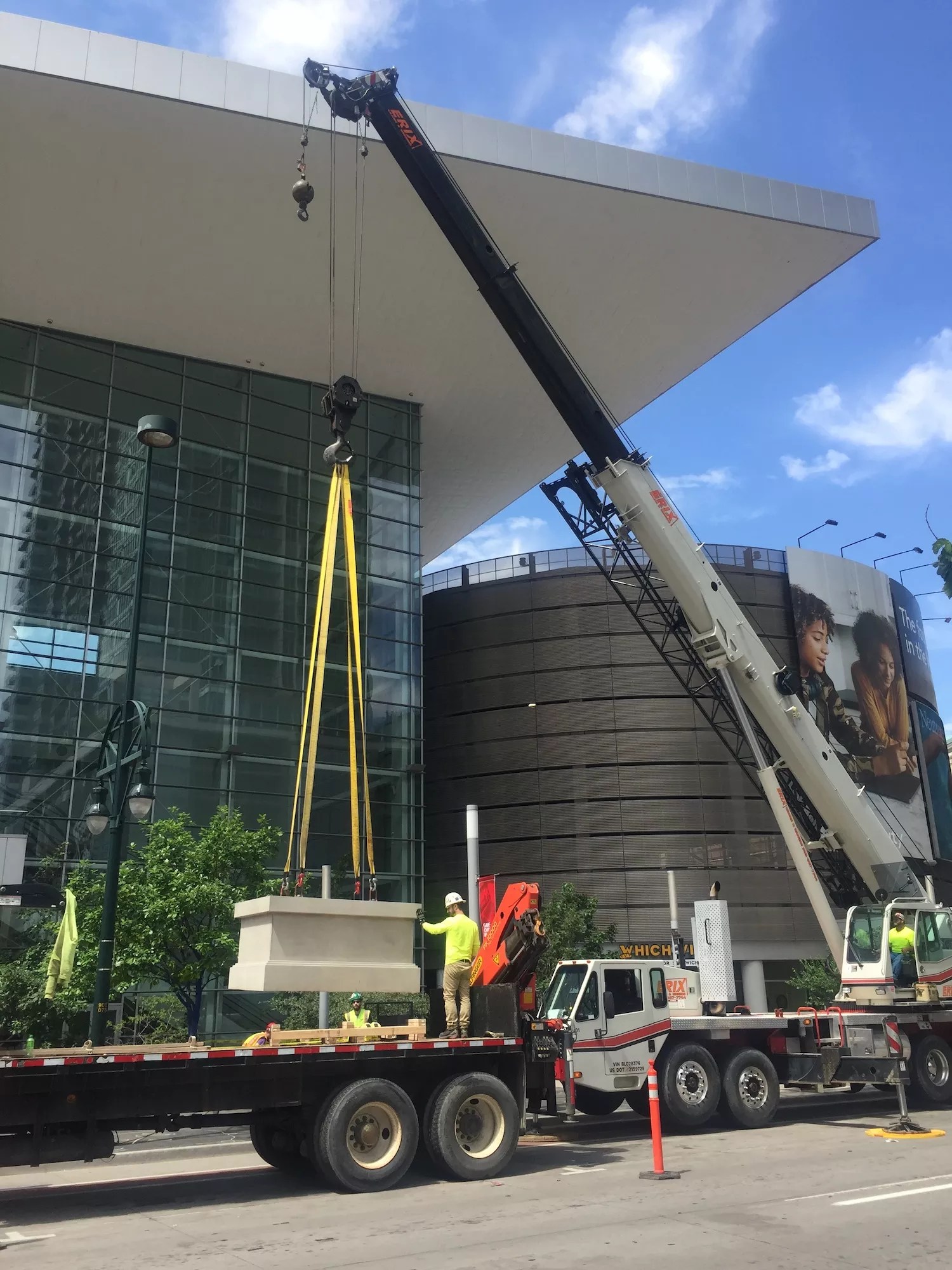
Installing the first leg of MONUMENTAL in the Denver Theatre District.
Courtesy of Black Cube Nomadic Art Museum
How does the MONUMENTAL project involve and give back to the community?
Hmm – that’s assuming it does give back to the community. With the artworks, they are all free and open to the public, as are all Black Cube projects. We also hope to give back by stimulating a conversation, not by making new, permanent monuments. Rather, we hope to temporarily activate public space with artworks that likely would never make it through the bureaucratic process, which traditional monuments often undergo.
It’s a challenging time for artists and creatives in the Denver metro area, who are being priced out of the city by gentrification and rising rents. What can they do about it, short of leaving?
They can exploit the advantages they have. Artists are adaptable, resourceful, and often have different lifestyles and value systems from the mai stream. The field is social, and their networks tend to be deep and supportive.
I recommend that artists look at their life and choose the type of lifestyle that makes them happy. Are they looking for stable income? Do they want to have a lot of studio time? Do they want to be acknowledged internationally? Do they prefer to be in an urban, suburban or rural setting? What resources do they have at their disposal? What sort of debt do they have?
After clearly directing their compass to their north, artists can make more appropriate sacrifices and decisions. Clark Richert is a great example with regard to his co-founding of the artist commune Drop City. Some artists might find a lot of freedom in this part of the world still – there are spaces where the Wild West exists. I think artists are more flexible in thinking of different ways of living, from building their own places to squatting or establishing communes.
My advice is to look at the system they are living under and see what can change based on their needs. There is a lot that is challenging about Denver, but it’s easier to do something about it when you look at it from the perspective of what you can control.
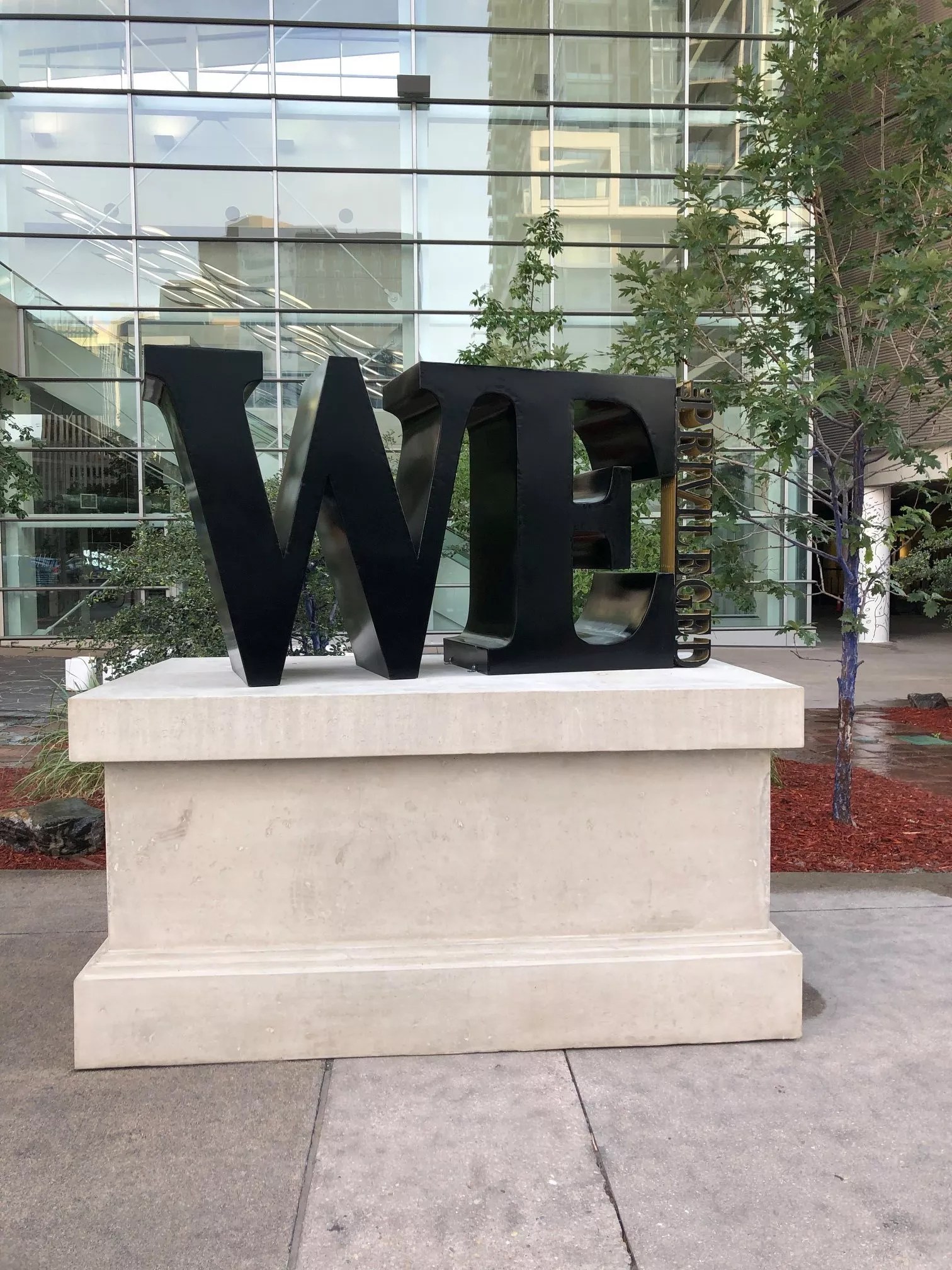
Artist Nikki Pike’s We monument in the Denver Theatre District.
Courtesy of Black Cube Nomadic Art Museum
What’s your dream project?
I can think of three. The first is feasible, and in fact happening at the Black Cube Headquarters this September. The second could possibly be done with enough time and moolah. The last idea is likely not realistic in my lifetime. All three projects involve commissioning new artworks. The first looks at fulfillment centers, the middle is an idea for an institution in a remote forest, and the last is not on this planet…literally.
Who is your favorite Colorado Creative?
Well, “favorite” is a tricky word for a curator, as it denotes favoritism. And when you favor someone, then you inherently take on the responsibility of excluding or neglecting others with equal claims. So for this reason, I think it’s best for me to avoid artists altogether in this response, as I endeavor to have ethical relationships with all artists I work with.
Given this, I think it’s an apt moment to celebrate Heidi Zuckerman, who has been the director of the Aspen Art Museum since 2005 and just announced that she will be leaving her post in September.
Heidi has done a lot to build a contemporary art institution that has international heft (and market sensitivity, which is perfect for Aspen). I respect what she has accomplished to develop the scene in Aspen and wider Colorado, and in growing and establishing a new building for the AAM.
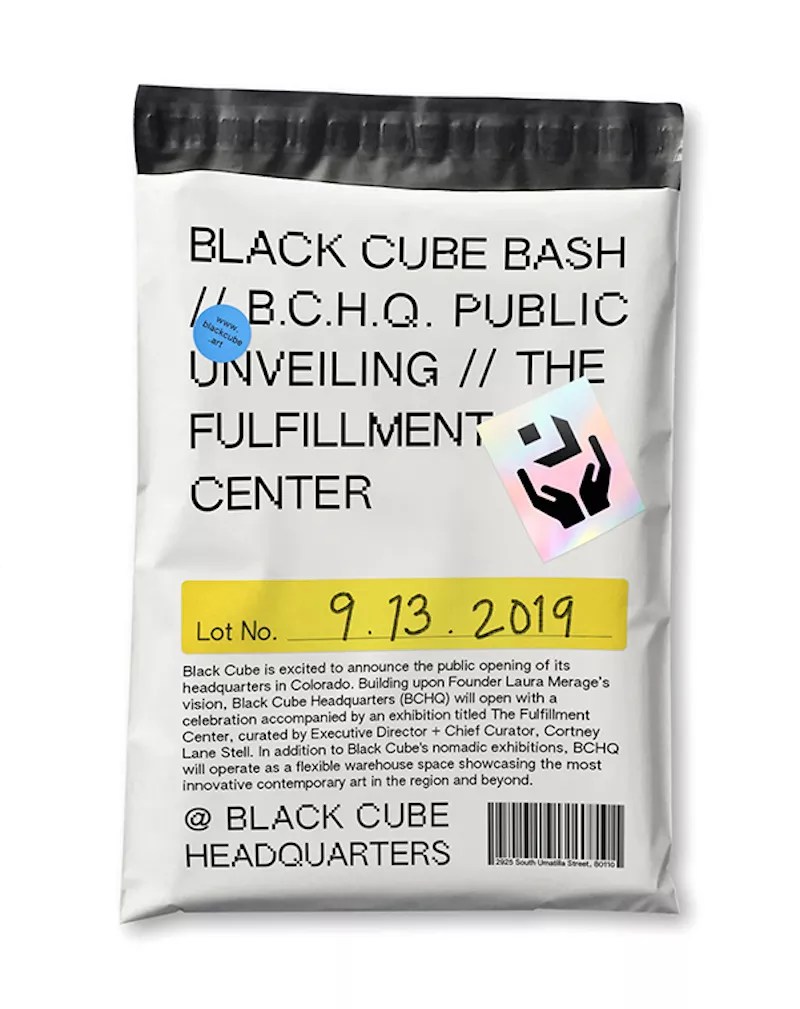
An announcement for the grand opening of Black Cube Headquarters.
Courtesy of Black Cube Nomadic Art Museum
What’s on your agenda right now and in the coming year?
Well, to say the least, a lot. Black Cube’s schedule is pretty busy for the rest of 2019. We have several projects (both opening and ongoing) in Denver, as well as a residency exchange between Prague and Mexico City, and Black Cube Fellowships featuring site-specific artworks both nationally and internationally. I am extremely excited for the group exhibition opening at the Black Cube Headquarters this September 13. The exhibition is titled The Fulfillment Center and looks at our relationship to warehouses under the digital economy.
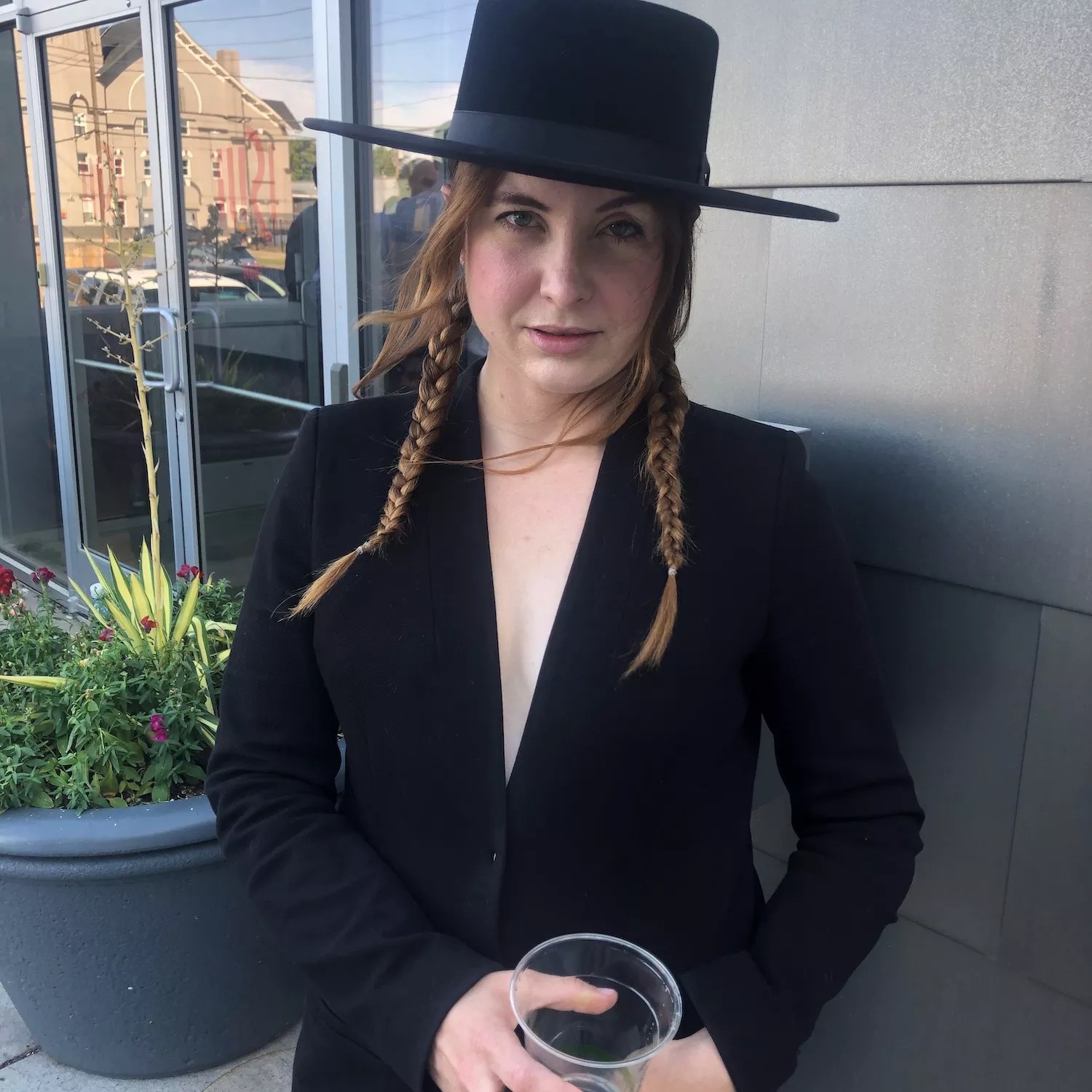
Cortney Lane Stell is ready to greet the worldwide future of contemporary art.
Courtesy of Black Cube Nomadic Art Museum
Who do you think will (or should) get noticed in the local arts community in the coming year?
I think Coleman Mummery‘s work at the new space in the resurrected Rhinoceropolis is a fresh approach to exhibition-making. It’s nice to see someone organizing exhibitions who is interested in both philosophical discourse and experimental artwork. Plus, Coleman has a very interesting art practice unto himself. He is currently working on a collab with Livy Snyder that I am excited to see develop.
As part of Black Cube’s MONUMENTAL project, Nicky Pike’s “Monument to Denver” is currently on view through September 11 on 14th Street between Champa and Stout streets in the Denver Theatre District. Subsequent monuments by Noah Manos and Jaime Carrejo will debut, respectively, in the same location on September 20 and November 15.
A triptych of images created by For Freedoms depicting three interpretations of a town hall meeting portrayed in Norman Rockwell’s iconic 1943 “Freedom of Speech” painting is also on view at 1345 Champa Street, through June 2020. Find a complete schedule of events, community workshops, exhibitions and installations happening through the end of the year in conjunction with MONUMENTAL online at Black Cube’s website.
Learn more about Cortney Lane Stell online.